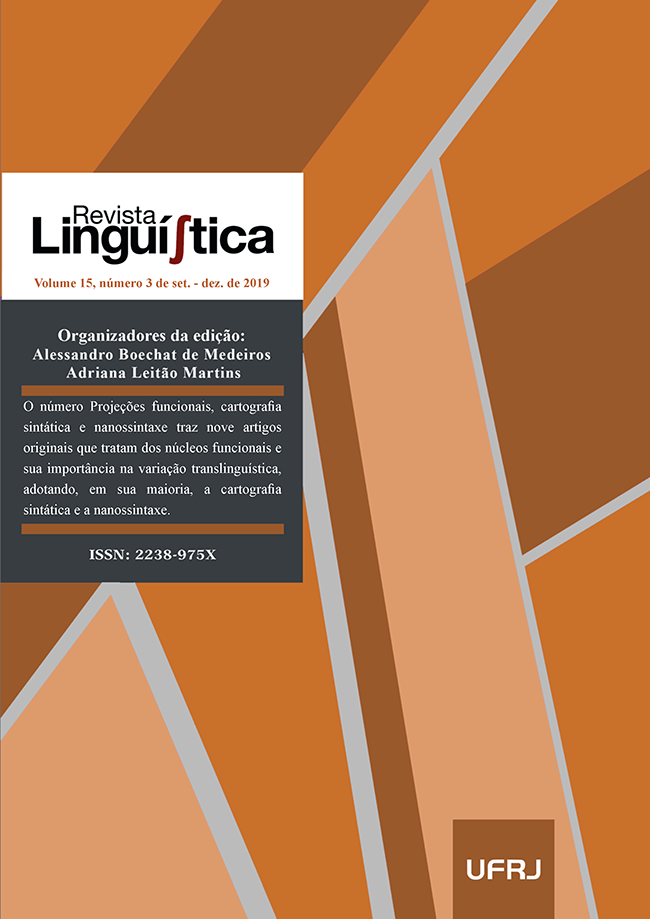PATH and semantic island; PLACE and condition of referentiality
DOI:
https://doi.org/10.31513/linguistica.2019.v15n3a28475Keywords:
nanosyntax, semantic primitives, first language acquisition.Abstract
This paper has a theoretic object: the behavior of PATH and PLACE semantic features in Brazilian Portuguese (PB) in sentences where the subject position is fulfilled by non-agent constituents. Alternations like João temperou a carne > A carne temperou (John seasoned the meat>The meat seasoned) are contrasted by João atravessou a rua > ?A rua atravessou (John crossed the street> ? The street crossed). In the later example, PATH, maintained by the street extension, contributes to temporal development of the crossing event; and this is a semantic constraint. PLACE, on the other hand, allows for more readings: Firmino entrou a bola no gol and Ele correu os meninos da sala (Firmino entered the ball into the goal and He ran the boys out of the room). Even in non-explicit agent sentences, this feature facilitates interpretation: Maria secou a roupa no varal > O varal secou a roupa (Mary dried dresses at the clothes-line > The clothes-line dried the dresses). These phenomena are traditionally called ‘causative alternation’, ‘causativization of intransitives’ and ‘locative inversion’, and have been widely investigated (NAVES; LUNGUINHO, 2013; CANÇADO; AMARAL, 2010; NEGRÃO; VIOTTI, 2011). But our aim is to choose an alternative theory that could give us a generalized approach, as in the nanosyntax approach (STARKE, 2009; RAMCHAND, 2008, 2017; RAMCHAND; SVENONIOUS, 2014; PANTCHEVA, 2009, 2011; CAHA, 2009; and at PB, FEREIRA, 2017, PIRES, 2016). Production and comprehension data from PB acquisition corroborate the hypothesis that PATH is a constraint, and PLACE is a collaborative feature for movements.
---
DOI: http://dx.doi.org/10.31513/linguistica.2019.v15n3a28475
Downloads
Published
Issue
Section
License
Authors who publish in the Revista Linguí∫tica agree with the following terms:
The authors maintain their rights, ceding to the journal the right to first publication of the article, simultaneously submitted to a Creative Commons license permitting the sharing with third-parties of published content as long as it mentions the author and its first publication in the Revista Linguí∫tica.
Authors may enter into additional agreements for the non-exclusive distribution of their published work (for example, posting in online institutional or non-profit repositories, or book chapters) so long as they acknowledge its initial publication in the Revista Linguí∫tica.

The journal Revista Linguí∫tica is published by the Post-Graduate program in Linguistics of UFRJ and employs a Creative Commons - Attribution-NonCommercial 4.0 International (CC-BY-NC).









